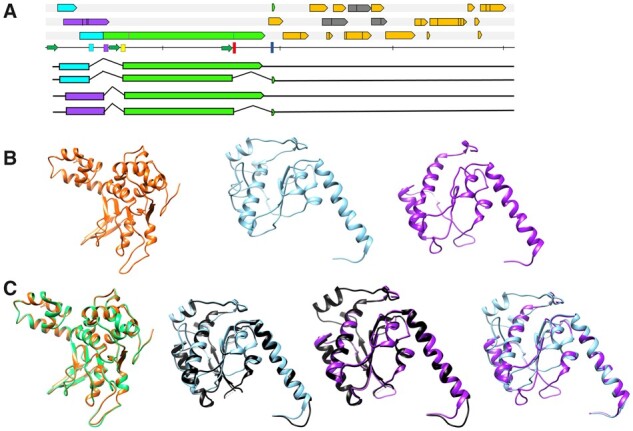Figure 2.

The hypothesized expression strategy and homology modelling of the Leporidae endogenous dependoparvovirus-like element Rep represented by the element of S.floridanus. Panel A shows the hypothetic transcription pattern from the upstream most promoter, homologous to p5 of AAV2. Both ancestral reading frames with the potential of encoding the N-terminal region of the large Rep78/68, namely frame A (purple) and frame B (cyan) could be possibly spliced to the rep gene (green), using donor sites marked by the purple and cyan bars, respectively. Homologues of the cap gene are shown in orange, homologues of the AAP frame in grey, and the vertical bars represent stop codons. The blue and red bars indicate the donor- and acceptor sites used to express the C-terminal truncated versions of Rep, that is Rep68/40. Hypothesized transcripts are mapped below the genome map. Panel B displays homology models of the Rep DNA-binding regions encoded by both ORF A and B as well as of Rep40 of the S.floridanus element. From left to right the Rep40, the ‘cyan’ N-terminus and the purple N-terminus Rep78/68 homology models are shown. Panel C shows these models superimposed with the respective crystal structure model of AAV2 or with each other. From left to right: S.floridanus Rep40 (orange) with AAV2 Rep40 (green); S.floridanus Rep78/68 N-term ‘cyan’ (blue) with that of AAV2 (black); S.floridanus Rep78/68 N-term ‘purple’ (purple) with that of AAV2 (black); S.floridanus Rep78/68 N-term ‘purple’ (purple) and ‘cyan’ superimposed.
